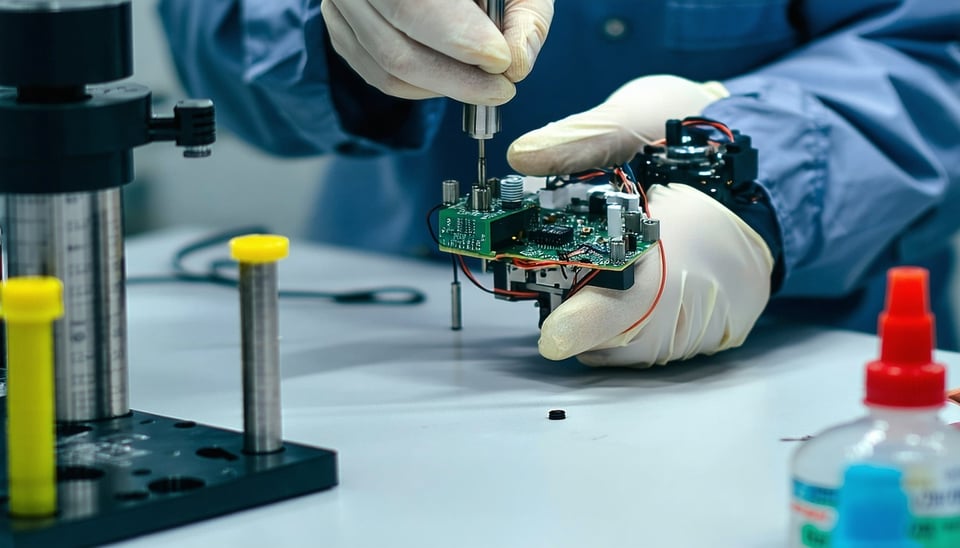
Manufacturing an electrical medical device is a complex undertaking, and one of the most critical decisions a company will make is choosing the right production model. The choice between onshore, offshore, and hybrid manufacturing can profoundly impact costs, quality, time-to-market, and regulatory compliance. This blog post explores these three primary models, outlining their respective advantages and disadvantages and highlighting how a global contract manufacturer like Sanbor Medical provides solutions that minimize risk and offer flexibility.
Onshore manufacturing, or reshoring, involves producing devices within a company's home country. This model has seen renewed interest, especially in the wake of recent global supply chain disruptions.
Advantages:
With production in the same country, a company can have direct oversight of manufacturing processes. This is particularly crucial for medical devices, where even minor defects can have significant consequences. Closer proximity allows for easier on-site inspections, faster issue resolution, and tighter control over quality management systems.
Time zone differences and language barriers are eliminated, fostering seamless communication between a company's engineering, marketing, and production teams. This proximity enables quicker design changes, more efficient prototyping, and a faster overall development cycle.
Manufacturing domestically provides greater legal protection for a company's proprietary designs and technologies. With IP laws that are easier to enforce, the risk of a product being duplicated or reverse-engineered is significantly reduced.
A localized supply chain minimizes reliance on international shipping and reduces exposure to geopolitical risks, customs delays, and rising transportation costs. This can lead to shorter lead times and a more stable, predictable production schedule.
Disadvantages:
The primary drawback of onshore manufacturing is often the higher cost of labor compared to many international locations. While automation can mitigate this, it remains a significant factor in overall production expenses.
Depending on the specific skills required, a domestic labor pool may not be as large or specialized as those available in some offshore hubs, which can impact production scalability and turnaround times.
Offshore manufacturing involves moving production to another country, often to leverage lower labor and material costs. This has been a popular strategy for decades, particularly in the electronics and medical device sectors.
Advantages:
The most compelling reason for offshoring is the potential for substantial cost savings. This includes lower labor costs, reduced raw material expenses, and more favorable manufacturing overheads in some regions.
Many offshore locations have developed into advanced manufacturing hubs with a mature ecosystem of suppliers and a large, skilled workforce dedicated to specific technologies and processes.
Manufacturing in a target international market can help a company better understand local demand, adapt products to regional specifications, and avoid tariffs or trade barriers.
Disadvantages:
Managing a global supply chain is inherently more complex. Companies face longer shipping times, increased transportation costs, and potential delays due to customs, trade policies, and unexpected disruptions.
Protecting intellectual property can be a significant challenge when manufacturing in countries with different legal frameworks and enforcement standards.
Time zone differences, language barriers, and cultural nuances can complicate communication, leading to misunderstandings, delays, and a loss of direct control over the manufacturing process.
The hybrid model combines the best aspects of both onshore and offshore manufacturing. It's a highly flexible approach where a company strategically distributes different stages of the manufacturing process to different locations. For example, high-value, sensitive components or prototyping might be done onshore, while high-volume assembly is conducted offshore to capitalize on cost savings.
Advantages:
The hybrid model allows companies to achieve cost savings for high-volume production while maintaining direct control and quality oversight for critical processes.
By diversifying production across multiple locations, a company can significantly de-risk its supply chain. If a disruption occurs in one region, production can be shifted or scaled up in another, ensuring business continuity.
This model provides the agility to respond to market fluctuations, regulatory changes, and evolving customer demands. It allows for a nimble strategy that can pivot as needed.
The complexities of medical device manufacturing make choosing a contract manufacturing partner with a robust, flexible model essential. A global contract manufacturer like Sanbor Medical provides a compelling solution by offering a hybrid approach that leverages a global footprint with a U.S.-based management and engineering team.
Sanbor Medical's offerings align perfectly with the hybrid model, giving their clients the "best of both worlds." The company's U.S. headquarters in Allentown, Pennsylvania, provides a close-to-market point of contact for customer service, engineering support, and project management. This onshore presence ensures seamless communication, intellectual property protection, and rigorous quality control oversight, which are paramount for medical devices.
Simultaneously, Sanbor Medical operates manufacturing facilities in lower-cost regions. This global presence allows them to provide competitive pricing through global sourcing and consolidated purchasing power, passing cost savings directly to their clients. This is particularly beneficial for high-volume production runs where the cost advantages of offshoring are most impactful.
By working with Sanbor Medical, a company can:
The U.S.-based team acts as a single point of contact, managing the entire project from design to delivery and ensuring quality standards are met across all facilities.
They can reduce manufacturing costs by up to 20-25% by leveraging Sanbor's global footprint and efficient production processes.
The diversified manufacturing locations and robust supply chain management system de-risk the supply chain, protecting against unforeseen disruptions and geopolitical issues.
Sanbor's facilities are FDA-audited and rigorously audited by leading medical device companies, ensuring a commitment to quality and compliance regardless of the manufacturing location.
Ultimately, the decision of whether to use onshore, offshore, or a hybrid manufacturing model is a strategic one, with no single "right" answer. For companies seeking to balance cost-efficiency, quality, and supply chain resilience in the highly regulated medical device industry, a global contract manufacturer with a hybrid approach like Sanbor Medical provides an integrated solution that offers a powerful competitive advantage.
Ready to start a conversation? Contact our team today